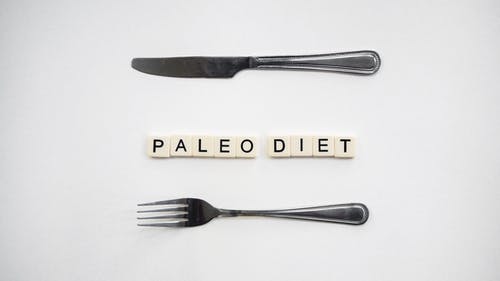A lot of diet types aim to reduce body weight by substituting major macronutrients with better alternatives. One of these diets is the paleo diet. It’s a diet based that rose in popularity in 2014 with help from internet people and Loren Cordain.
Other weight loss alternatives give instant results like Airsculpting and Kybella. These two procedures are minimally invasive and are no longer than a dentist appointment. But for individuals who want to lose weight with the help of food, the paleo diet may be a good choice.
What Is a Paleo Diet?
The Paleo diet is known by other names like the caveman diet or the stone-age diet. It attempts to copy the dietary habits of early men during the Paleolithic period. The diet involves eating food high in protein, with emphasis on grown products.
The Paleo diet has several variations, but the underlying theme is replicating the diets of hunter-gatherer humans. Some have even debated whether the diet should be composed of food prior to the hunter-gatherer period. This puts more emphasis on food actively hunted by early humans, hence, more emphasis on meat.
History of the Paleo Diet
The term “The Paleo Diet” was trademarked by health scientist Loren Cordain but the diet regimen itself precedes it by at least 4 decades. In the 1950s, a book titled Eat Fat and Grow Slim proposed a low-carb diet which was what existed during the Stone Age. Or at least that’s what Richard Mackarness, the book author, said.
Other books existed advocating the superiority of “Stone Age” diets over recent ones.
The famous publication New England Journal of Medicine showed an article written by Eaton and Konner. The article shows that the cause of most chronic diseases such as diabetes and excessive weight gain is attributable to the quality of the existing food choices back then.
Even before the term Stone Age diet was introduced, the idea that our early ancestors’ diet was superior to today’s food choices already existed. One of the people who supported and furthered this idea was cornflake inventor John Harvey Kellog.
The idea for a “paleo diet” was already around a century ago but it gained popularity in the mid-stages of the previous decade.
Examples of Food In A Paleo Diet
A paleo diet usually consists of non-processed, non-grain based food. There is a heavy emphasis on fruits and vegetables. Necessary fats and cholesterol are obtained by eating nuts and organ meats.
Since paleo diets were based on historical data suggesting the type of food eaten by early men, it excludes dairy. This is because humans only learned to domesticate cows for their milk post-Paleolithic era.
Macronutrients In Paleo Diet
Since there is no mention of grains or grain-based products in a paleo diet, this means the carbohydrate composition is low or insignificant. What stood in place of grains and grain-based food were root crops such as potatoes, yams, plantains, carrots, squash, and others.
Since hunter-gatherer humans relied on actively looking for prey, the majority of their diet was composed of meat. All types of meat can be eaten in a paleo diet – chicken, beef, veal, turkey, or pork. Red meats contain good amounts of fats and cholesterols if you’re allergic to nuts.
On the topic of fats and oils, nuts, fish, olive oil, coconut oils, butter, and avocados are good sources. Historically speaking, the need for oils and fats weren’t too great since the Paleolithic period occurred after the Ice age.
Early human’s bodies didn’t need as much insulation during the cold, except for the winter season in the higher hemispheres.
As with any other type of diet, the Paleo diet has pros and cons, indications and contraindications. It’s better to consult nutritionists or physicians prior to adapting a certain dietary regimen.
Pros
- Lower risk for developing inflammatory diseases
- Helps lose weight by cutting calorie heavy food (processed and grain-based products)
- Helps avoid diabetes and consequently, better blood glucose levels
- Lower blood glucose means lower viscosity leading to healthy blood pressure levels
- Prevents micronutrient deficiencies
Cons
- Organic foods today aren’t exactly cheap
- Not recommended for individuals who have higher caloric needs (lifters and high-level athletes)
- Exclusion of carbohydrates may not benefit individuals (diabetics) who cannot manage blood sugar levels
How Does It Help With Weight Loss
The very first thing a Paleo diet does for the body is reducing caloric intake by excluding or minimizing the amount of carbohydrates consumed by an individual. That’s why this is not recommended for people who need a guided carbohydrate intake who may “crash” from the lack of glucose.
The reduction in glucose also forces the body to make use of available glucose stores from the liver. When the liver can no longer make its own glucose, it will rely on existing fat deposits and metabolize them for fuel. The paleo diet thus shares a common metabolic effect to the body with a ketogenic diet.
A paleo diet also puts emphasis on the consumption of fruits and vegetables which are both rich in dietary fiber. This stimulates the digestive system to work more, and improving nutrient absorption leads to lesser cravings.
Most individuals who gain fat from excess carbohydrates mostly have inflamed digestive tracts, minimizing the body’s ability to deliver much needed nutrients, the latter ultimately resulting in satiety.
The healthy amount of fats and oils also help the body manufacture hormones that play a vital role in metabolism. A Paleo diet may contribute in alleviating the symptoms experienced by individuals suffering hormonal imbalances.
